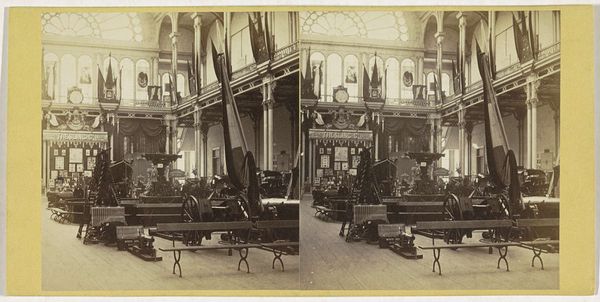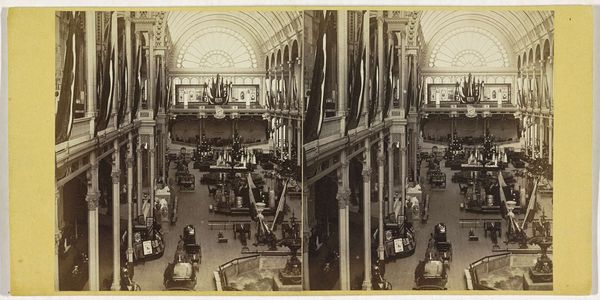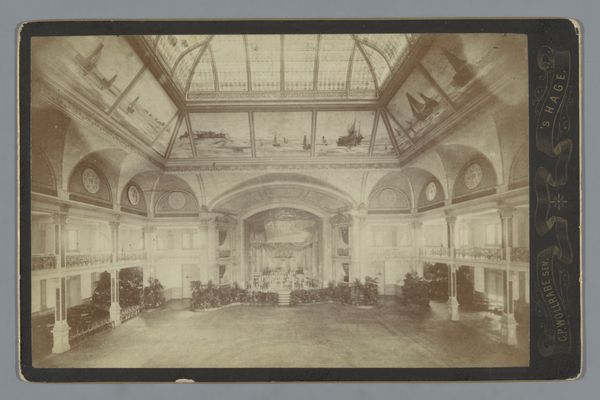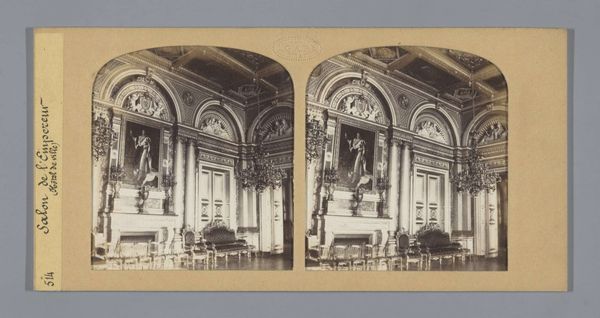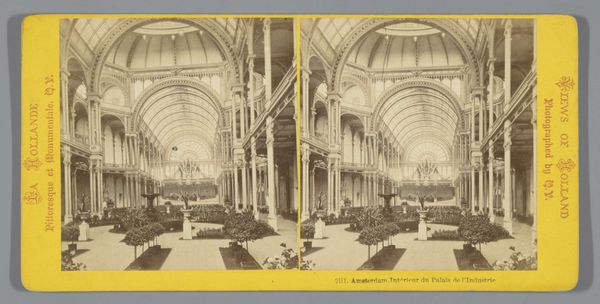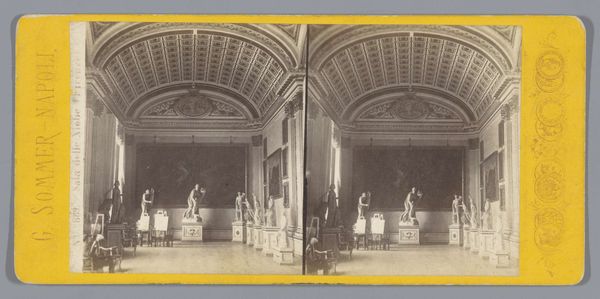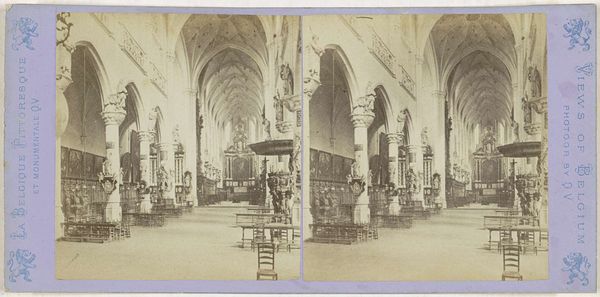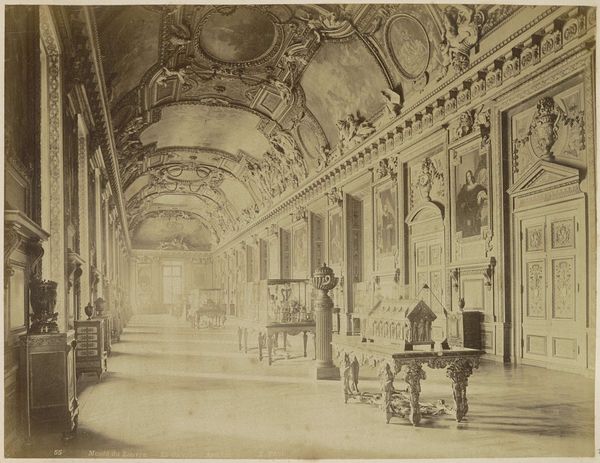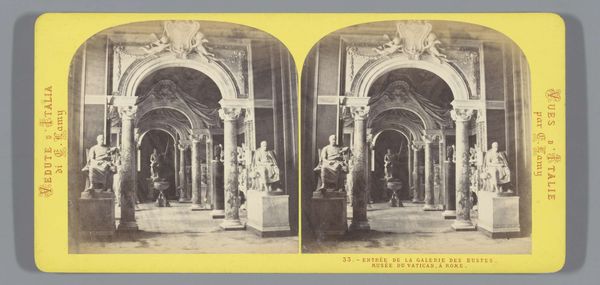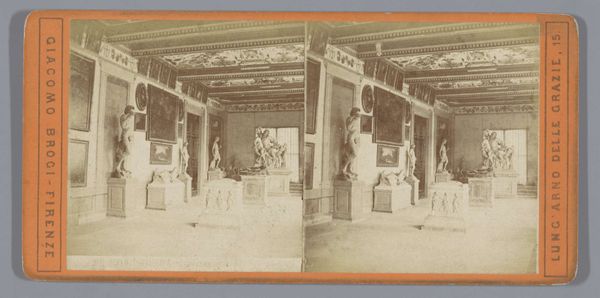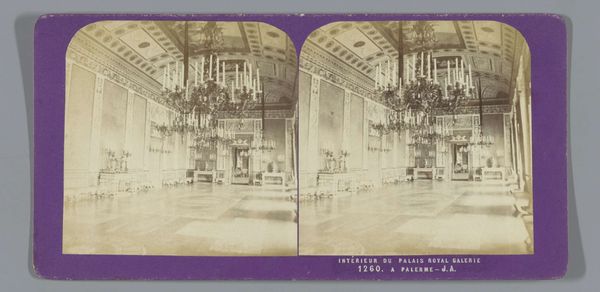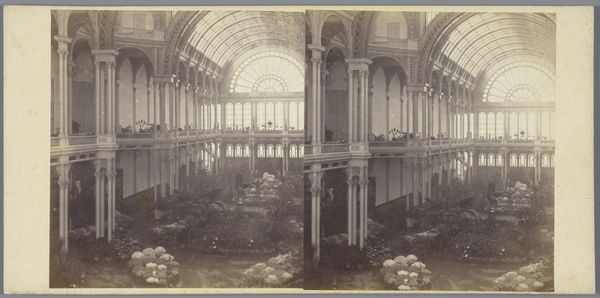
Zaal met uitgestalde objecten bij de Tentoonstelling voor Nationale Nijverheid in het Paleis voor Volksvlijt, Amsterdam 1866
0:00
0:00
print, photography, gelatin-silver-print
# print
#
etching
#
photography
#
gelatin-silver-print
#
cityscape
#
genre-painting
Dimensions: height 82 mm, width 76 mm, height 82 mm, width 76 mm, height 85 mm, width 173 mm
Copyright: Rijks Museum: Open Domain
Curator: This gelatin silver print from 1866 shows us a room full of exhibits during the National Industry Exhibition in Amsterdam. It's by an anonymous photographer, leaving a delicious air of mystery around the creation. Editor: My first impression is almost overwhelming grandeur; the architecture is just so… much! The light coming in those windows softens what could be a pretty intimidating space, though. Curator: Grandeur is right! These world's fairs, these national exhibitions were statements, weren't they? Shows of power, progress, and access. The items displayed, those examples of national industry, were also meant to solidify specific power dynamics. Who is privileged enough to produce, to display, to acquire? Editor: I never considered the layers of privilege at play, interesting! The architecture echoes those aspirations – mimicking ancient roman columns and renaissance arches in steel and glass. But those dark benches and the lone guard give me a sense of imposed order too, a subtle but clear boundary. Curator: Absolutely, the watchful eye. It also reminds us that this spectacle isn't inherently open or democratic. And, let’s be honest, these events reinforced class structures as much as anything else, didn’t they? Access wasn't exactly universal. Who were these exhibitions *for*, really? Editor: A loaded question, indeed. This photo then is both a document and a form of propaganda – presenting the image of a progressive nation while simultaneously hiding inequalities? Curator: Precisely! What really sticks with me, thinking about that tension, is how photography itself was rapidly becoming industrialized around this time. So this artwork is both capturing industry and enacting it. It adds a bittersweet resonance to the whole scene, like it’s commenting on its own creation. Editor: Well said, I didn't notice it initially. Considering your perspectives, the photographer remains invisible to the grandiosity, the displays, and all its imposed regulations. I suppose this enhances the conversation we had about art and capitalism's complicated co-creation.
Comments
No comments
Be the first to comment and join the conversation on the ultimate creative platform.
